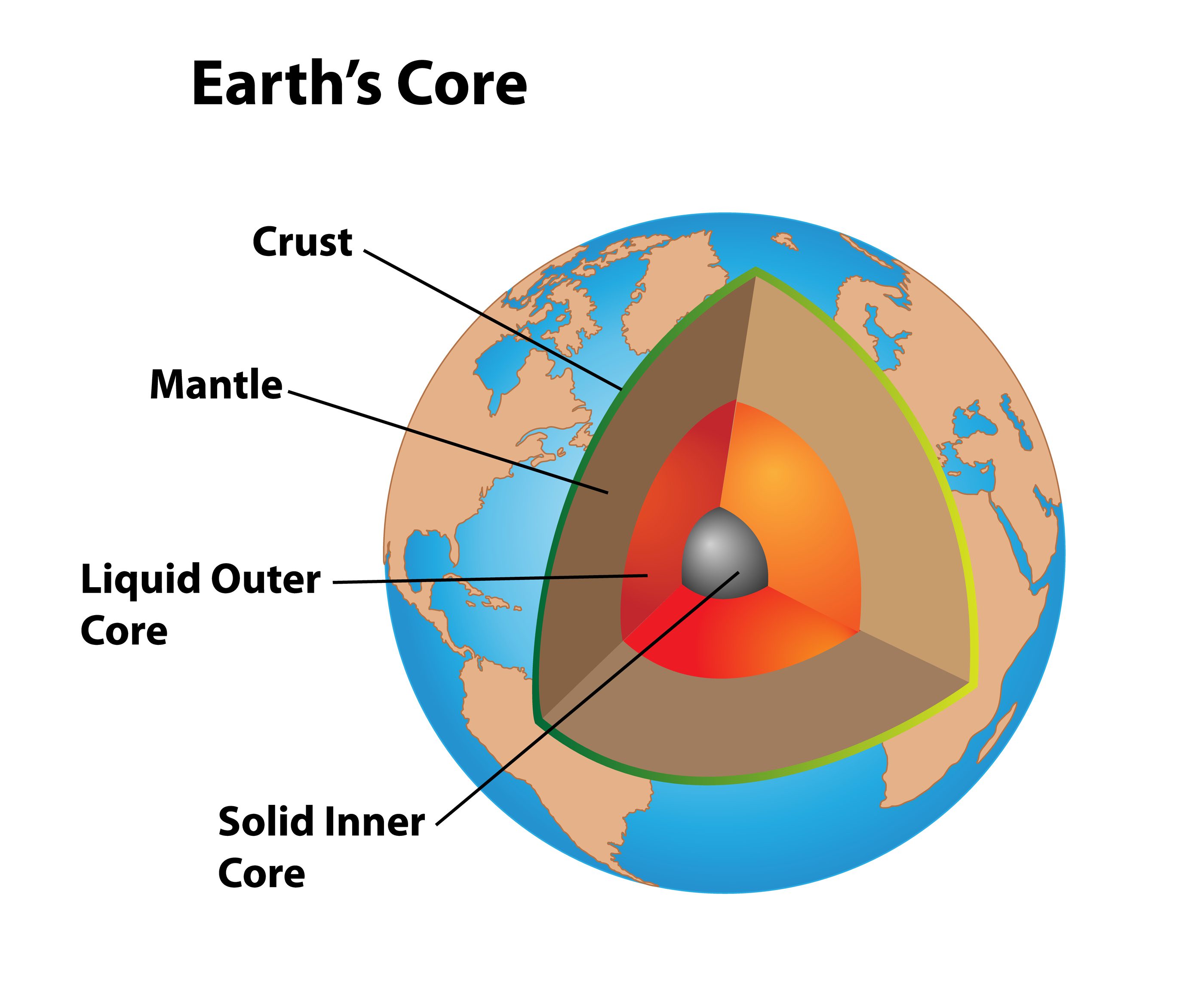The swirling solid ball at the center of Earth’s inner core appears to have recently paused and may even now be rotating in the opposite direction from previous decades, according to a new study.
A pair of scientists from Peking University in China have been looking at the movements of Earth’s mysterious innards by studying data on seismic waves from earthquakes that have blasted through the Earth’s inner core.
By looking at changes in these waves, they can get some idea of what’s going on within Earth’s inner layers, far deeper than any drills and instruments can reach. Their data details the change in seismic waves across many decades, starting with Alaskan records from the early 1960s up until recordings gathered in 2021.
The data showed that parts of the core that previously showed clear signs of variation suddenly exhibited very little change around 2009, which they say suggests that the inner core rotation paused.
They also picked up notable changes in the waves starting around the early 1970s that suggest this pause was part of an oscillation that occurs every seven decades or so, when the inner core is gradually turning back in the opposite direction.

Earth’s structure and many layers. Image credit: OSweetNature/shutterstock.com
The inner workings of Earth are a mysterious business. Its structure can be loosely chopped up into four major layers: the outer crust, then the mostly-solid mantle, followed by the liquid metal outer core, and the final inner core made from iron and nickel.
Since the inner core is separated from the rest of the solid Earth by the liquid outer core, it’s able to turn on a different rotation from the Earth’s surface. The spin of the inner core is governed by the magnetic field generated in the liquid metal outer core, as well as the gravitational effects of the mantle.
However, theories about the movement of this inner core are not agreed on. Many researchers previously held that the planet’s innermost geological layer rotates alongside the rest of the planet at a slightly faster rate than the surface, but it’s now believed to be less straightforward.
Last year, research hinted that Earth’s inner core oscillates, gently swaying and swirling from one direction to another in a cycle. Interestingly, they found some unusual data from the early 1970s, just like this new study.
The results suggested that the inner core was moving slowly in a different direction between 1969 and 1971, sub-rotating at least a tenth of a degree per year, compared to the direction it was moving between 1971 and 1974.
“From our findings, we can see the Earth’s surface shifts compared to its inner core, as people have asserted for 20 years,” John E. Vidale, study co-author and Dean’s Professor of Earth Sciences at USC Dornsife College of Letters, Arts and Sciences, said in a statement in 2022. “However, our latest observations show that the inner core spun slightly slower from 1969-71 and then moved the other direction from 1971-74.”
The strange movements of Earth’s core might seem very distant from us, but its behavior does actually have an influence on life above the surface.
Earth’s core, specifically its outer core, influences the planet’s magnetic field. Since the North Magnetic Pole was first scientifically documented in the early 19th century, it has wandered some 2,250 kilometers (1,400 miles) across the upper stretches of the Northern Hemisphere from Canada towards Siberia.
Between 1990 and 2005, the rate of this movement accelerated from less than 15 kilometers (9.3 miles) per year to around 50 to 60 kilometers (31 to 37 miles) per year. This flux is likely to be the effect of two magnetic “blobs” of molten material in the planet’s interior, causing a titanic shift of its magnetic field.
The new study was published this week in the journal Nature Geoscience.
Source Link: Earth's Spinning Inner Core Recently Paused Then Flipped Its Direction